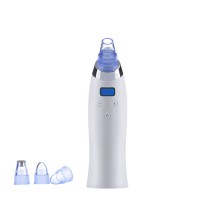-
Phone
+86- 111****
-
Address
Boluo county dragon Lotus Lake Village Town Industrial Park, China
-
E-mail
LatestProducts
Distinguishing Industrial Brush Types from Manufacturing Processes
1. Horse nail machine hair planting brush: The most traditional brush making process involves using a horse nail hair planting machine to implant the brush hairs in bundles on the surface of the brush roller or brush plate after punching. The brush products made using this process have the widest application range. Firstly, the cost is relatively low, and as a consumable, the cost of the brush must be considered. But there are several drawbacks to the brush roller made of horse nail hair planting: firstly, the density is not enough, because there must be a certain spacing between each hole of punching and hair planting, and spacing cannot produce a high-density effect. In some special industries that require high-density brush rollers for operation, this type of brush roller for horse nail machine hair planting cannot be used; The second issue is that the binding strength of the brush wire is not strong enough. The so-called horse nail hair planting method uses iron wire to be pressed into a "U" shaped buckle through a convex groove, which is used to fasten the brush wire and implant it into the punched hole. The "U" shaped buckle intersects in the hole and deepens into the hole to firmly bind the brush wire to the roller shaft, but the tensile force is limited. This process is not ideal for production on brush rollers that require high-speed operation in some special industries.
2. Spring brush: The brush roller made by the spring brush process solves the problems of high density and strong fastness. During manufacturing, the brush bristles are first pressed into an aluminum strip or stainless steel strip by a strip brush equipment to form a strip brush, and then wrapped on the roller shaft. The two ends are welded firmly using sub pot welding. In some special industrial production, it is also necessary to make a spring brush with a certain gap, because special effects such as dust removal need to be considered.
3. Pressing brush: It is the process of arranging the brush wires tightly together and then placing them in a specific mold. Steel sheets are used to form one brush wheel by one through a stamping mechanism. When making brush rollers, multiple brush wheels can be connected in series and fixed on the roller shaft. This process can achieve the highest brush wire density, but the disadvantage is that the cost is high and the production efficiency is slow.
4. Injection molding brush: It is a process of arranging the brush wires into a special mold, and then using injection molding to fuse the brush wires with the brush plate to form a whole. The advantage of this process is that the brush bristles have high bonding force because they have already integrated with the brush plate. Currently, the cleaning brush for sanitation vehicles is made using this process.
2. Spring brush: The brush roller made by the spring brush process solves the problems of high density and strong fastness. During manufacturing, the brush bristles are first pressed into an aluminum strip or stainless steel strip by a strip brush equipment to form a strip brush, and then wrapped on the roller shaft. The two ends are welded firmly using sub pot welding. In some special industrial production, it is also necessary to make a spring brush with a certain gap, because special effects such as dust removal need to be considered.
3. Pressing brush: It is the process of arranging the brush wires tightly together and then placing them in a specific mold. Steel sheets are used to form one brush wheel by one through a stamping mechanism. When making brush rollers, multiple brush wheels can be connected in series and fixed on the roller shaft. This process can achieve the highest brush wire density, but the disadvantage is that the cost is high and the production efficiency is slow.
4. Injection molding brush: It is a process of arranging the brush wires into a special mold, and then using injection molding to fuse the brush wires with the brush plate to form a whole. The advantage of this process is that the brush bristles have high bonding force because they have already integrated with the brush plate. Currently, the cleaning brush for sanitation vehicles is made using this process.
